During World War II, here's how Wilmington leaned on the StarNews
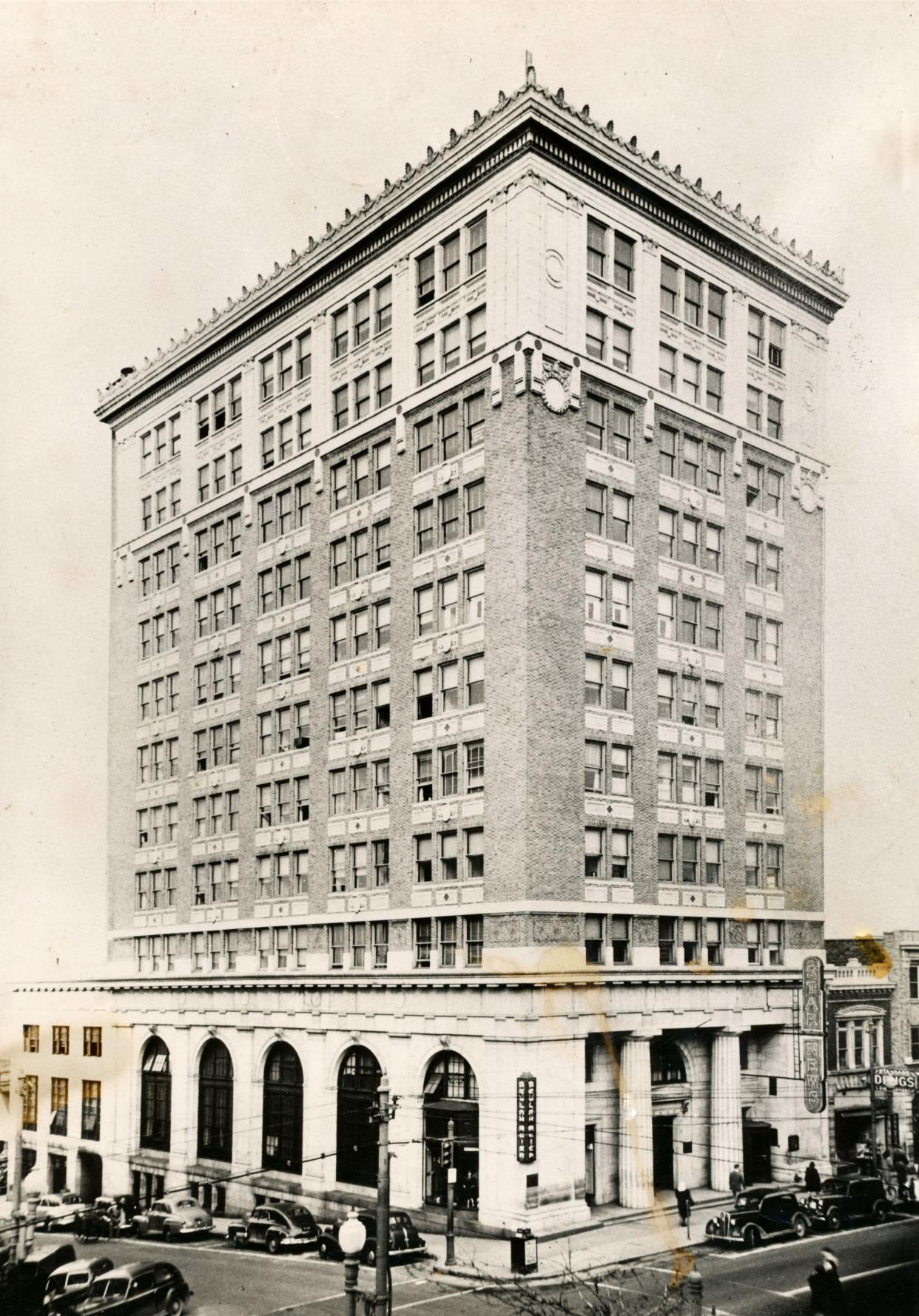
Immediately reacting to onrushing upheavals and without fanfare, the Wilmington StarNews appointed itself as the area’s World War II “voice of conscience.”
Deadly times. Someone had to lead. The newspaper fit the bill.
From early 1942-on, it exhorted women to volunteer for aircraft recognition and hospital work, men to buy war bonds, common sense from the federal Office of Price Administration (rationing), housewives to save cooking fats, no-letup social life, War Relief for Britain and Russia and jaywalking downtown to cease.
More: Honor Flight: 96-year-old Brunswick veteran recognized for service on 'heartwarming' trip
More: A look at the past: New Hanover County schools during World War II
A beacon of light, rallying point for news and speculation, and ever reminding: “Don’t you know there’s a war on?”
It encouraged people to hold the rudder steadily. Frankly, I believe such influence helped win the war at home.
But the “conscience” lightly treated the undercurrent of killings, prostitution, robberies, accidents and petty crimes and taking criminals to task. After reporting such, it let go. Just a city’s price for wartime?
The journalistic-patriot, publisher-owner R. B. “Rye” Page, cast the StarNews squarely into the war effort. “Our chief aim — to aid in every way the prosecution of the war to complete victory,” he said in 1943.
And it did.
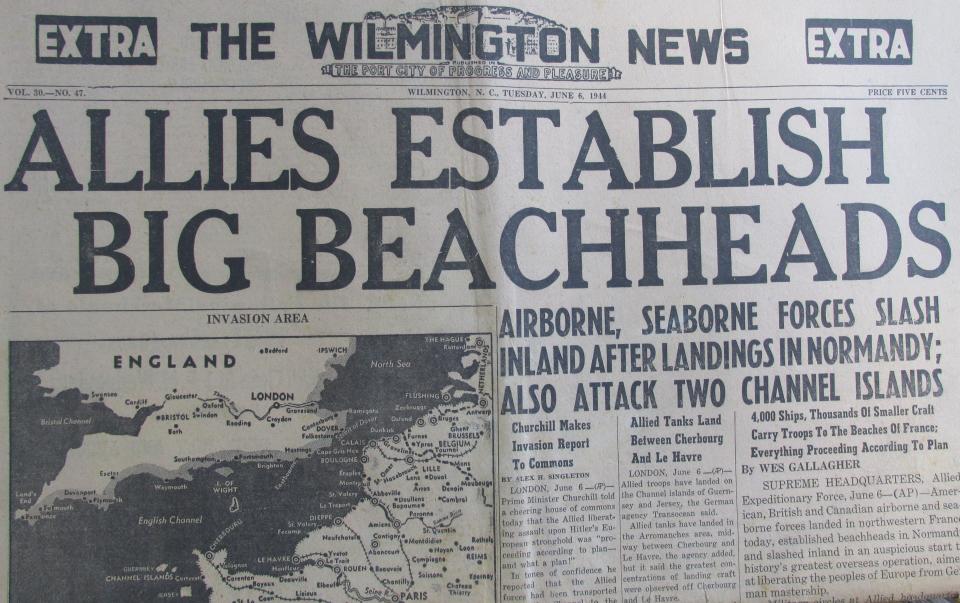
Newspaper conglomeration
The area’s newspaper printed under three names. The Wilmington Morning Star published in the early a.m. Wilmington Evening News in early afternoon. Sunday Star-(dash)News combo on Sunday mornings.
For this and all history columns I use the current StarNews.
The masthead of the state’s oldest newspaper boasted “The Port City of Progress and Pleasure.” The Murchison Building on North Front Street housed all facilities.
More: A view of history: What life was like at Forest Hills in Wilmington during World War II
More: Remembering Bluethenthal Army Air Base: When the skies were filled with patrols, training
The area’s principal news source covered New Hanover County without competition. The radio station, WMFD-630; the Wilmington Evening Post (published in 1945); and the Black-owned Cape Fear (later, Wilmington) Journal added community coverage.
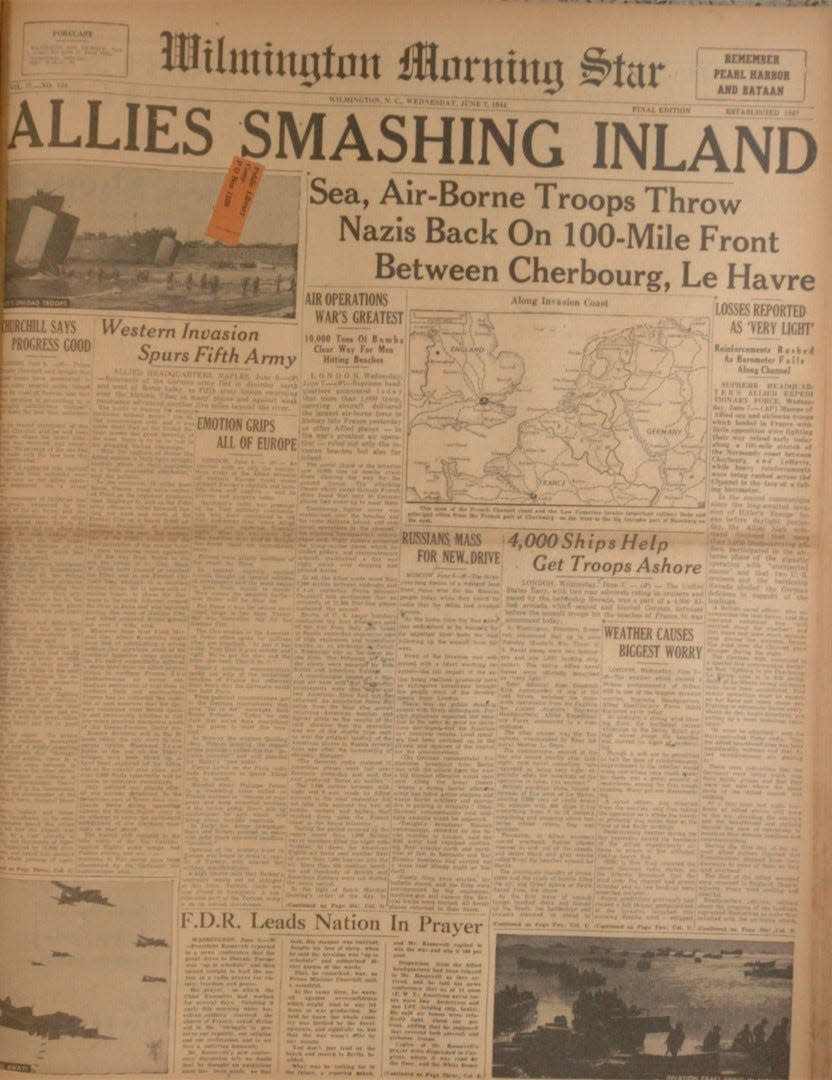
Readers sought gossip, inspiration, consolation, trends, advice, entertainment, radio schedules, product advertisements, stories of its neighbors in uniform and casualty lists.
The civic-minded, visionary Page called the shots. Challenging editorials and headlines reflected apropos cheerleading, with suppositions for the future. When applicable, the newspaper admonished and didn’t mince words. Syndicated columnists echoed war support.
It tried interpreting government rules, announcements, warnings and other home-front vitals. Attempting to circumvent censorship for printable facts, it stated in 1942: “Good news, even when it’s censored to the hilt, is always welcome,” concerning the confidential buildup of Bluethenthal Army Air Base.
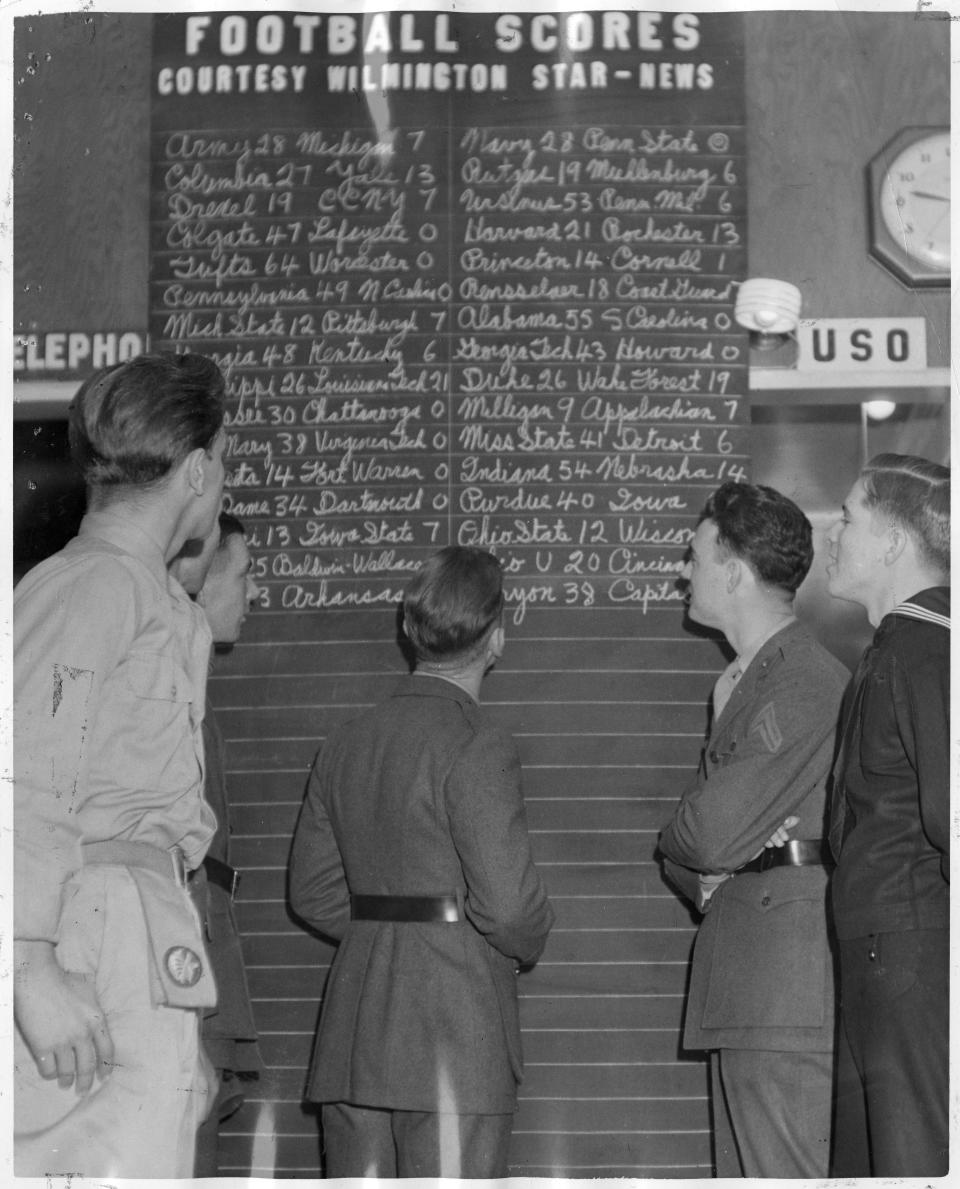
Newspaper operations
It implored residents to get serious about the war. With a limited staff, non-attributed information and speculations fed much local reporting, maybe jumping to conclusions.
It lacked investigative reporting capacity to track stories and follow up. What ultimately happened to that moonshiner, black marketeer or rapist? Exception: raising awareness of county mental health and detention facilities deficiencies.
More: World War II: When the Army descended in droves on Wilmington
Its one section covered all subjects from war news to women’s fancies, sports and ads. Articles tended short. Page 1 stories often jumped to page 2. Bylines did not identify StarNews reporters. Outside sources including columnists or the Associated Press, which had exclusivity on StarNews items, did. An editorial page ran political and war cartoons.
Reflecting segregation, the StarNews reported mostly unflattering or negative news about Blacks, usually noting only their first or last names, no titles, married or not. It printed no Black images.
It publicized rape victims' names, and didn’t wince in detailing killings, fights and accidents.
Subscription rates: by carrier: one month - Star .25; News .20; combo .40. One year - combo $20.80. Carriers went door to door to collect.
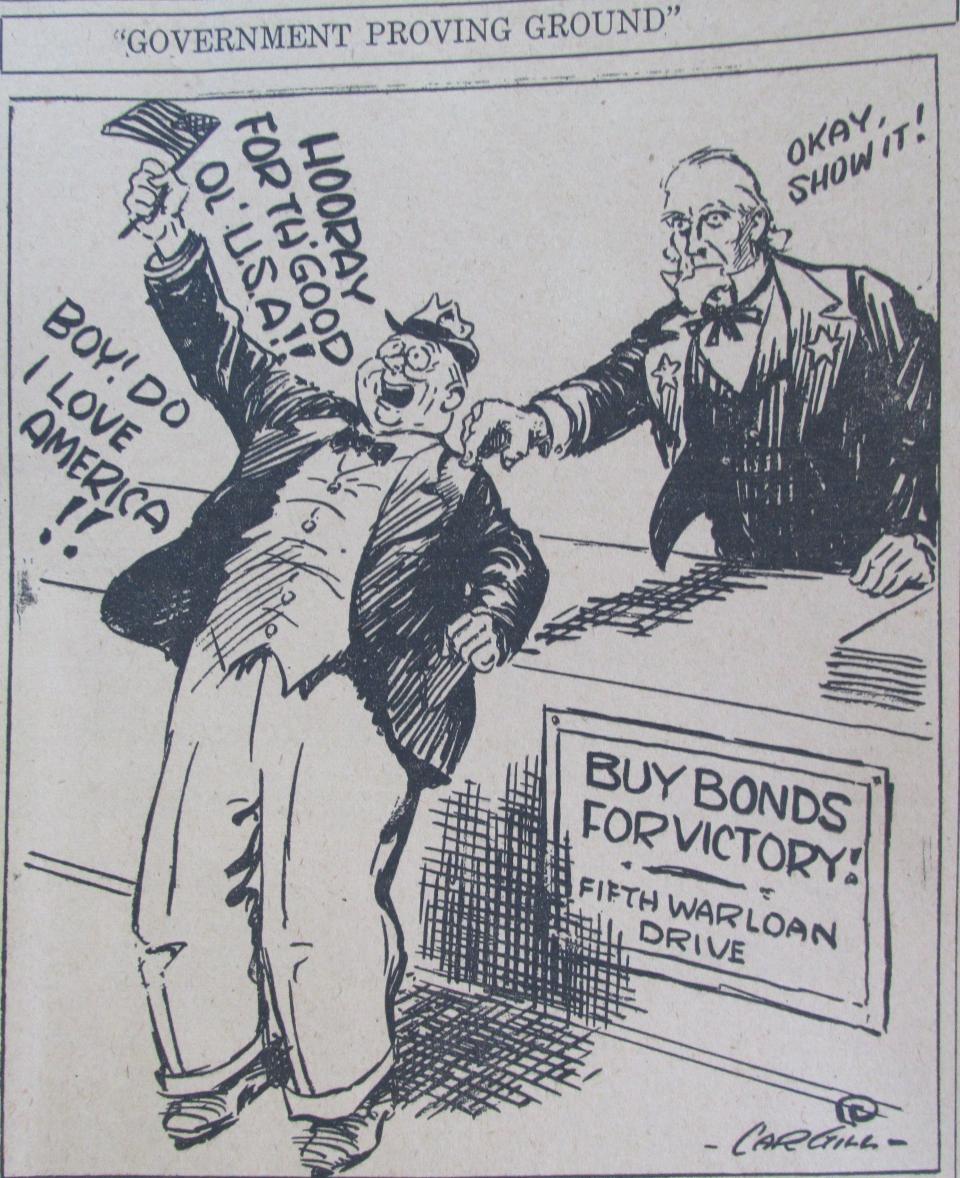
More prospective “wanters” than “offerers” flooded the want-ad page, especially those seeking limited housing.
More: World War II: As GIs enjoyed Wilmington weekends, a nearby hamlet becomes a boom town
By February 1944, newsprint paper scarcity caused it to reduce pages and refuse new subscriptions. “Despite this curtailment we are going to furnish as broad news coverage and as many features as we have been publishing. We are glad to do our bit in the war emergency, and solicit the patience and long continued friendship of our readers,” noted one edition.
One thing hasn’t changed since: The Blondie comic occupies its top-right wartime position.
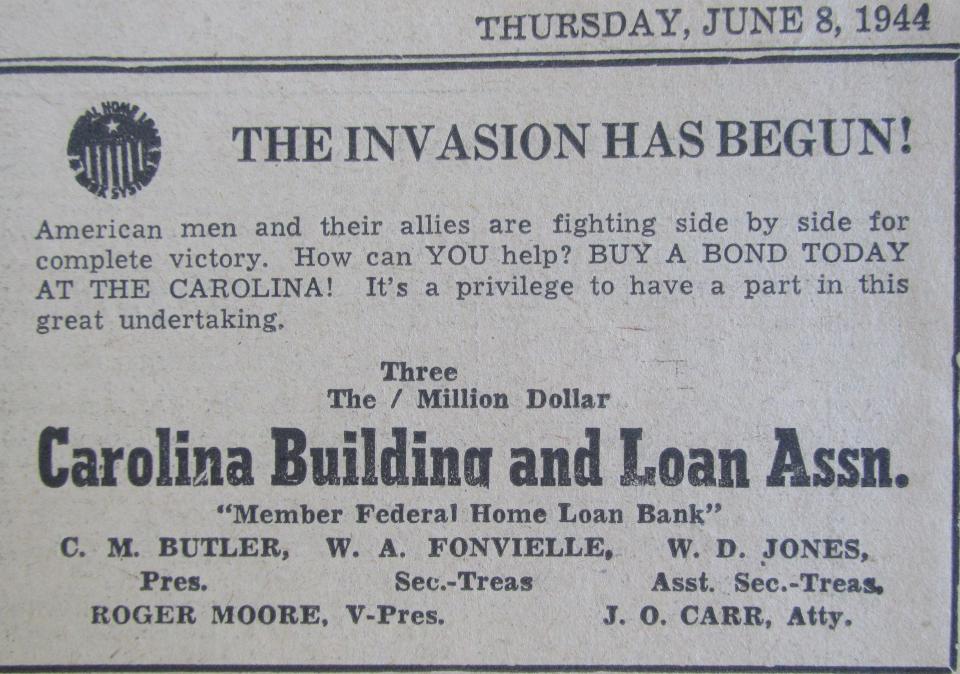
For the war effort
The newspaper vociferously preached supporting the war effort. It appeared on top of local events and heralded temporary economic infusion created by the shipyard and military installations. Rosy now, but an uncertain tomorrow. The AP's war news generated sweeping multi-line headlines.
While strongly backing and connecting with our military, it printed combat setbacks and bad news as well as good. A willing conduit for distributing government information, from must-know items to propaganda, it relished its presumed duty covering both war and home fronts.
Besides playing on patriotic heartstrings, it couldn’t ignore incidents of slackers and shirks, con men, and criminal acts. It confronted perceived “slackers.” “There are very many people who are not doing their duty in the war effort,” financially or as volunteers. They went after any groups lacking involvement and pulled no punches.
Did this work? Bits and spurts perhaps. Some might ask, why is our newspaper positioned to pass judgment and direct?
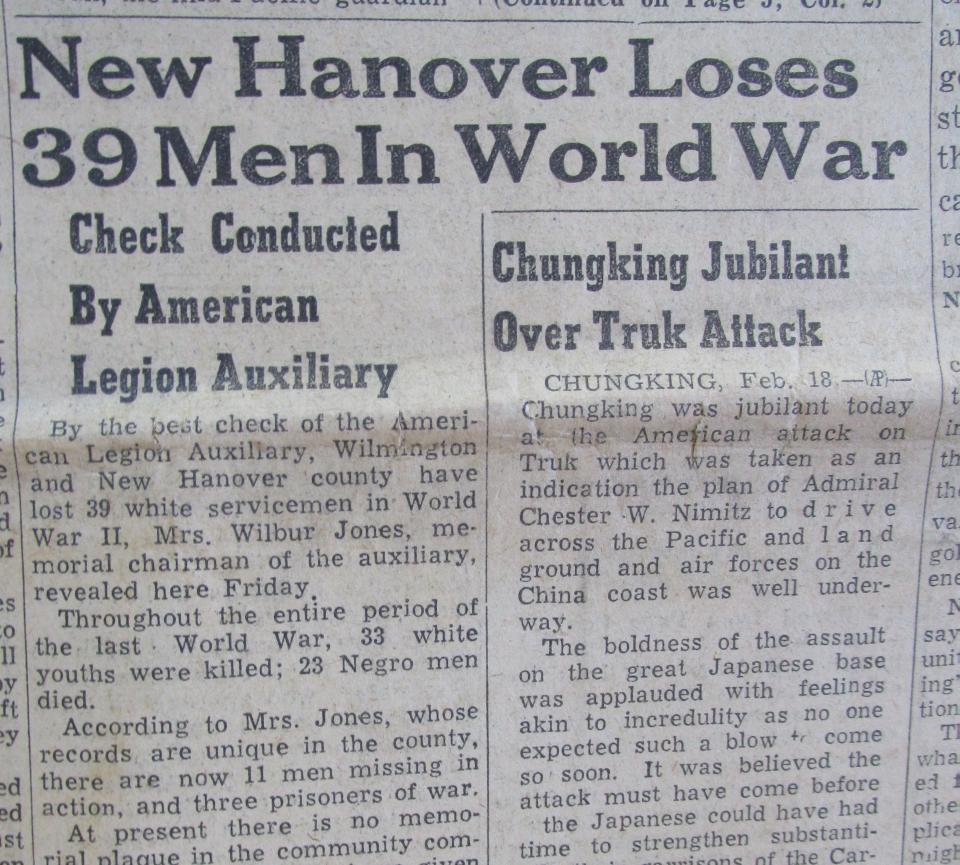
January 1944: It chastised the unresponsiveness of women, insinuating blame on those on the high social lists who needed no employment. “The sad fact remains that there are enough capable women in Wilmington to discharge every duty, who flatly refuse to lend a hand at any way or defense task, claiming the war effort does not touch them.”
Too bad the newspaper didn’t name names. That would have wounded the genteel norms and fractured egos.
April 1943: Too many local committees. “Over-committee-ing” it wrote, for getting in each other’s way and accomplishing little.
July 1943: An information and filter center. “The regular summer let-down has come. As the summer advances the staff falls off. This would not be so bad if the war took a summer vacation and the danger of attack faded. Without this service an enemy attack could lay Wilmington waste.”
During a mid-war attempt to form a shipyard union, the newspaper lambasted absenteeism — workers who don’t show up — calling it “a serious problem in Wilmington’s major war industry. Workers, receiving more money than ever before, have been ignoring their obligation to work to the limit. If they won’t work, make them fight.”
For some, their draft number came up.
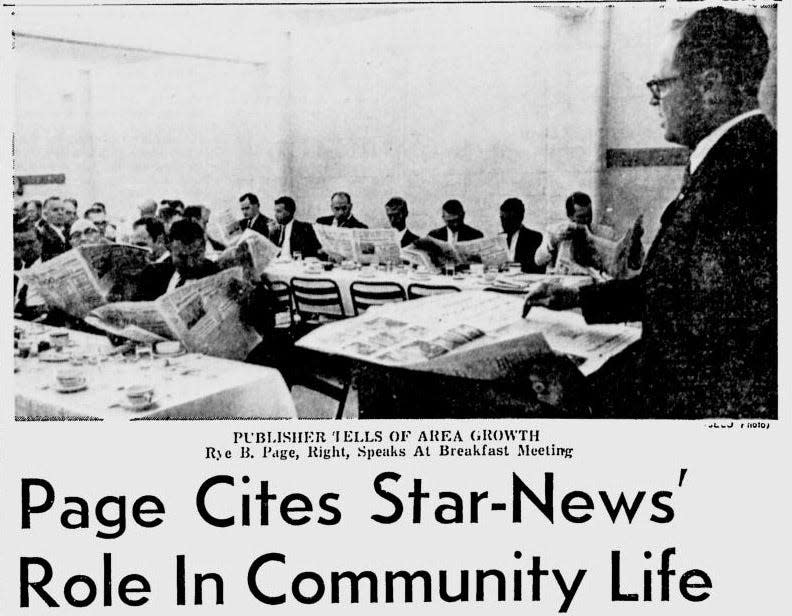
The worthiest of intentions
Early in the war the StarNews staked out an ambitious, worthiest-of-intentions peacetime wish list.
Consolidated city-county government
Public port terminals
Seaside highway between Wrightsville Beach and Bald Head Island
Extension of city limits
35-foot river channel with shiplanes into industrial sites along the river
Shipyards and drydocks
United industrial and resort promotional agency
Paved river road to Southport
Black health center around Community Hospital
Junior high school
Each required governmental action or encouragement. Perhaps thinkers looked backwards to mollify past neglect and reconstruct on obsolete foundations, with unreal objectives.
Nevertheless, look what transpired postwar, or didn’t.
Our next column explores StarNews content, features and causes.
Wilmington native Wilbur Jones is a retired Navy captain, author, and military historian who grew up here during the war. His popular wartime Wilmington books, “A Sentimental Journey” and “The Journey Continues,” are available on www.wilburjones.com.
This article originally appeared on Wilmington StarNews: As World War II intensified, how Wilmington leaned on the StarNews

